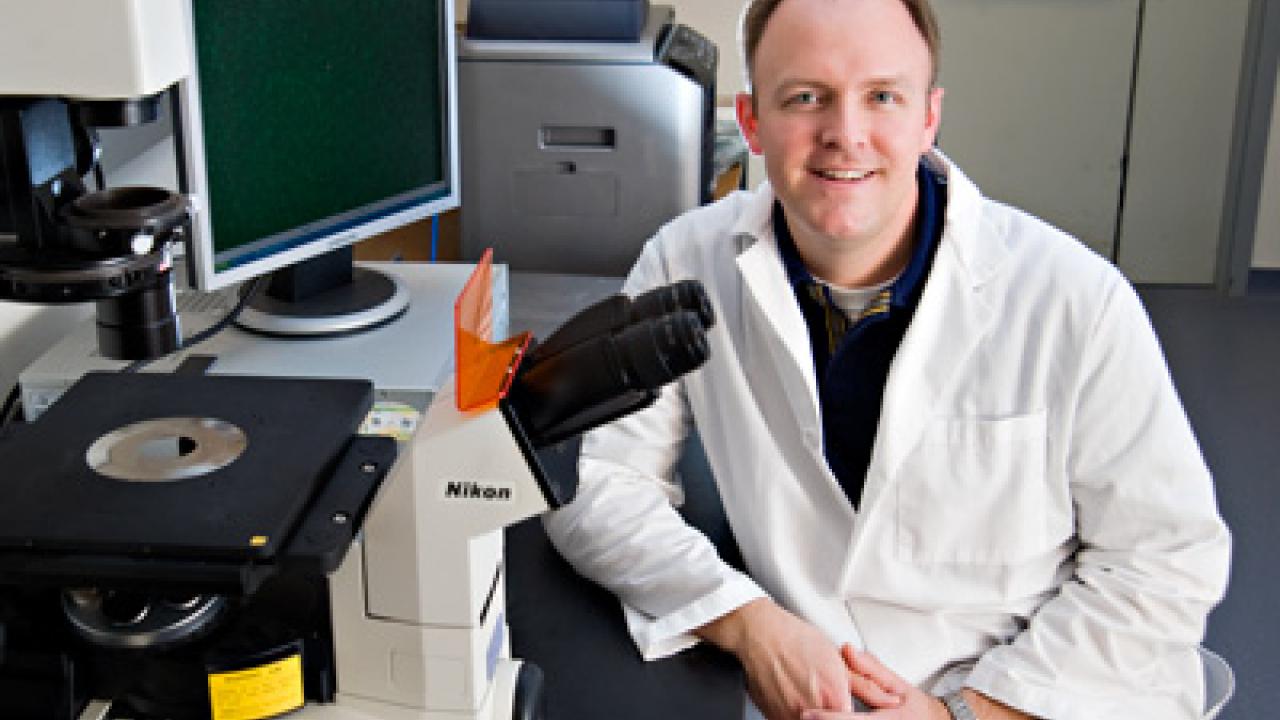With support from a foundation that champions cutting-edge medical research, a biomedical engineer at UC Davis will start work this month on developing a new treatment for infants born with disorders that cause the sutures of their skulls to prematurely fuse together.
The new approach is based on creating a synthetic bone matrix that is biodegradable and bio-absorbable. If successful, it could also lead to advances in treating various problematic bone fractures in adults, such as those caused by osteoporosis.
Kent Leach, an assistant professor of biomedical engineering, is the first UC Davis faculty member to receive a grant from The Hartwell Foundation, an organization that supports biomedical research projects with the potential for benefiting children. Specifically, the foundation specializes in funding innovative early-stage research that has not yet qualified for support from traditional sources.
Surgery is the standard treatment for infants diagnosed with craniosynostosis, the generic name for a group of disorders that result in the premature fusing of one or more of the sutures necessary for the skull to expand as the child’s brain grows. If left untreated, the disorder can cause abnormal head shape and increased pressure on the brain resulting in brain damage.
In a standard operation, surgeons remove swaths of fused bone, break them into segments then reposition a portion of them along the sutures to protect the exposed brain. The hope is that by removing some bone and rearranging the rest, growth will be slowed long enough to allow the brain to reach full size.
But in 6 to 8 percent of cases, a second operation is necessary, and in 25 percent of those cases, even a third operation will be required, with the risk of complications climbing with each ensuing operation.
Leach’s hypothesis is that it may not be the bone-forming cells themselves that are growing abnormally, but that the environment surrounding them, known as the extracellular matrix, may be providing improper instructions to the cells. “If we can deliver a different matrix — one that promotes the growth of healthy tissue — our hope is that we can eliminate secondary surgeries,” he said.
With $300,000 in funding from The Hartwell Foundation, Leach intends to engineer a porous, biodegradable material with the mechanical properties of bone that can be placed along the sutures as a substitute for the fragmented skull bones. His goal for the three-year term of the grant is to demonstrate the feasibility of this approach in laboratory rats.
“What we want to do is make a scaffold — a material that the bone-forming cells can enter — that supplies them with the proper directions for how much bone they should be forming and how fast they should be doing it,” he said.
Leach will be collaborating with two colleagues at the UC Davis School of Medicine: Alice Tarantal, a professor of cell biology and human anatomy who has extensive experience in stem cell research, and Simeon Boyd, an associate professor of pediatrics, who is an internationally recognized expert on congenital anomalies of the head and face.
Media Resources
Liese Greensfelder, Research news (emphasis: biological and physical sciences, and engineering), (530) 752-6101, lgreensfelder@ucdavis.edu
Kent Leach, Biomedical Engineering, (530) 754-9149, jkleach@ucdavis.edu
